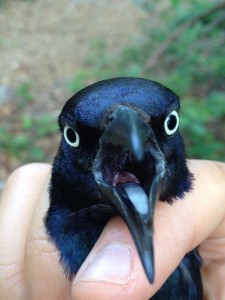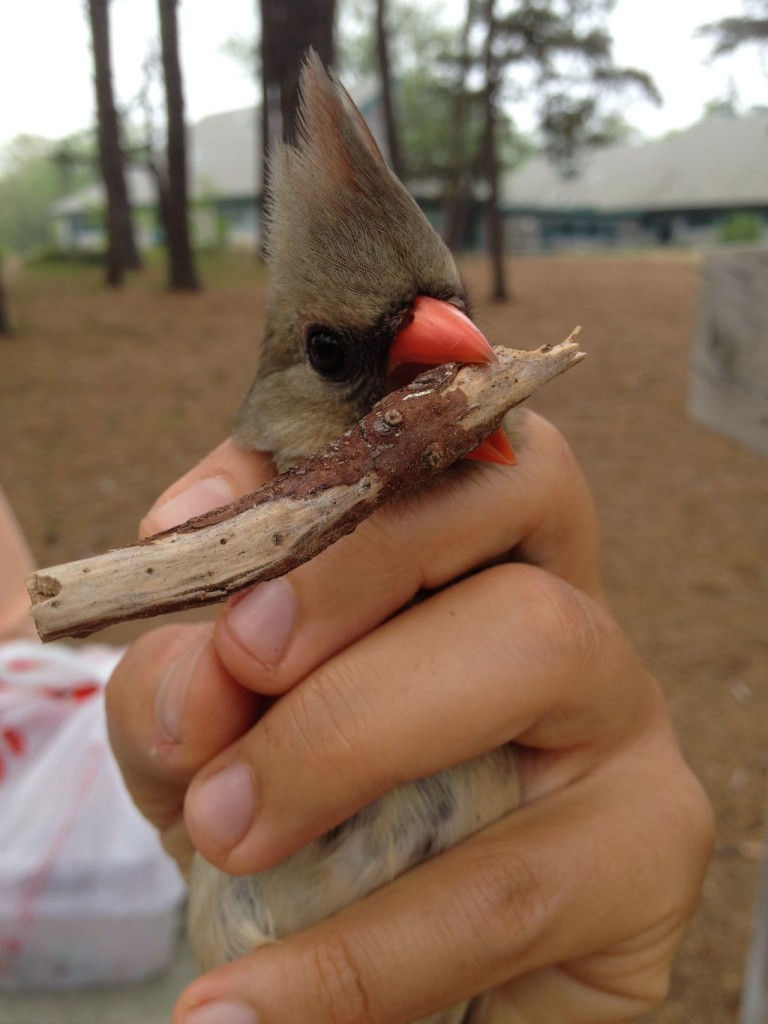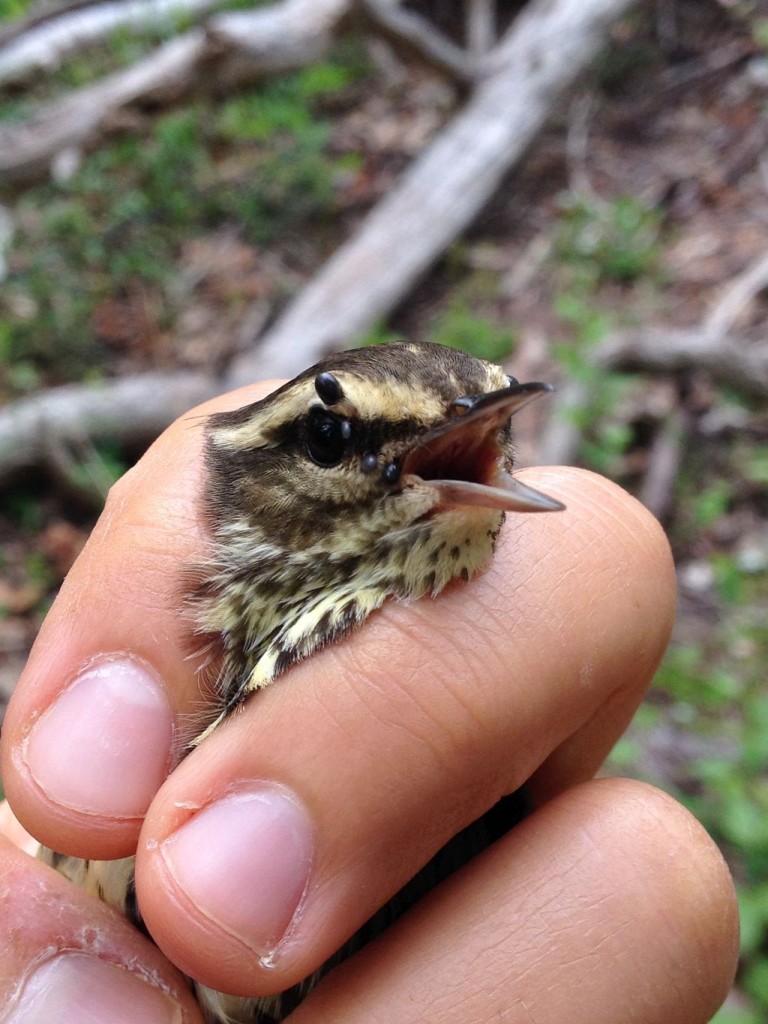As bird researcher James Junda and his team begin a second spring of bird banding at Wellfleet Bay, there’s a lot of anticipation about what they may see this year.
Getting the chance to view a songbird (and sometimes a raptor) in the hand is a special opportunity. Not only do you get to hold a bird and feel its heartbeat (and sometimes its bill…) there also are unusual behaviors and circumstances to observe.
Take Common Grackles, for instance. They can be pretty scary birds with their jet black feathers and piercing yellow eyes. At the banding station, they tend to make the most of these features.

Intimidating? That’s probably the idea. (photo by James Junda)
James says the open beak is likely an aggressive posture as opposed to a sign of stress.
Although grackles are among the birds with a strong reputation for biting the hand that bands them, James says the worst offender is actually one of the most popular backyard birds– the Northern Cardinal. This female was given a piece of wood to work on instead of a human hand.

Cardinals have seriously strong bills: good for crushing seeds and fingers. (photo by James Junda)
The banding season never fails to provide evidence of the tough lives birds lead–the predators, tall buildings, bad weather, and disease. This Tufted Titmouse is thought to have been the victim of a feather parasite, giving it a very spooky look!

This Tufted Titmouse may have picked up a feather parasite from a dirty bird feeder. A good reminder for all of us to clean our feeders regularly. (photo by James Junda)
And like human beings and their pets, birds are regularly bedeviled by ticks, especially birds that forage or nest near the ground.

A tick-infested Northern Waterthrush (photo by James Junda)
The bird banding team removed all the ticks from this Northern Waterthrush, so the bird benefited from a little first aid as part of its banding experience.
Like we said: it’s rough out there.

